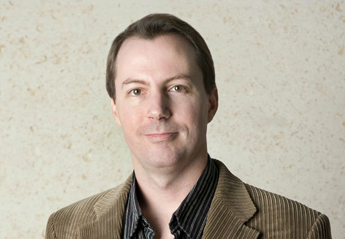
Scientific Discipline
Developmental Biology, Immunology
Related Links
Host Institution
Spanish National Center for Cardiovascular Research
Current Position
Dr. Méndez-Ferrer is a group leader in the Department of Cardiovascular Development and Repair at the Spanish National Center for Cardiovascular Research (CNIC), Madrid, Spain, and an adjunct assistant professor of Medicine in the Division of Endocrinology, Diabetes and Bone Disease at Mount Sinai School of Medicine, New York.
Current Research
Stem Cell Niche Physiopathology
Biography
Simón Méndez-Ferrer is a unifier. At every stage of his career, he has focused on consolidating disparate findings to show how different systems of the body are interlinked. It’s a complex jigsaw puzzle that has long held him rapt.
“It can be frustrating trying to figure out how all these different organs communicate,” he says. “But at the same time, it’s fascinating—connecting the brain to the bone marrow to other signals that are released from the nervous system.”
Méndez-Ferrer grew up in a family of physicians, so he was introduced to medicine at an early age. But as a child, he was more interested in playing scientist than in playing doctor. “In high school, I spent my time sneaking around in the lab, dissecting insects and frogs while most people were out playing soccer.”
He studied biology in college, but growing up around doctors had an impact and, as a graduate student at Sevilla University, Méndez-Ferrer began looking for a project that would link biology and medicine. It was then that he began to research the links between seemingly unconnected organs. A primary interest of the lab he joined was a small organ in the neck, called a carotid body. The carotid body produces the neurotransmitter dopamine, vital for signaling in the brain, as well as proteins called neurotrophic factors, which encourage neuron survival. Working in mice with Parkinson’s disease—a disorder characterized by a dopamine deficiency—he transplanted cells from the carotid body into their brains and found that he could induce a partial recovery. “Neurons that were dying were rescued from premature death,” Méndez-Ferrer says. It wasn’t the direct effect of dopamine that was responsible for the rescue, he discovered, but the ramped up production of neurotrophic factors that stimulated regeneration of the whole pathway.
As a postdoc with Paul Frenette at the Mount Sinai School of Medicine in New York, Méndez-Ferrer investigated a new link: the association between the nervous system and hematopoietic stem cells, which give rise to new blood cells and are found in both the bone marrow and circulating blood. In stem-cell transplants to treat leukemia and aplastic anemia, hematopoietic cells are harvested from blood and transplanted with the hope that they will find their way back to the bone marrow to establish new populations of blood-cell-generating stem cells. Méndez-Ferrer found that concentrations of hematopoietic stem cells in the blood aren’t constant over a 24-hour period but fluctuate according to circadian rhythms, the natural daily cycle of the body, which had immediate implications for bone-marrow and stem-cell transplantation.
In mice, the cells preferentially travel from the bone marrow into the bloodstream when the mice are sleeping, a pattern that’s also true in humans. Whereas most stem cells are regulated by cells in their proximity, Méndez-Ferrer found that the brain directly regulated a niche of stem cells outside the central nervous system. Nerves relayed cues to the bone marrow, modulating expression of a chemical called CXCL12 that determines the location of stem cells.
In work he’s done since, first as a junior faculty member at Mount Sinai and then in his lab at the Spanish National Center for Cardiovascular Research in Madrid, Méndez-Ferrer has gone on to show that the cells regulating the movement of hematopoietic stem cells are mesenchymal stem cells, which are precursors to fat and cartilage cells. Méndez -Ferrer’s discovery of this novel function of mesenchymal stem cells is one of the first examples of stem cells for one organ regulating stem cells of another.
Méndez-Ferrer is now working to dissect other aspects of mesenchymal stem cells to understand how they regulate trafficking and other functions of blood stem cells. This could help him design novel therapeutic approaches that could help expand blood stem cell populations or even manipulate stem cell fate.
“Every day is something different,” he says. “You start with an idea and then find different things, and those drive new ideas about new things to pursue. This is something you don’t find in other jobs.”
Articles & News
Research Papers
Selected Research Papers




